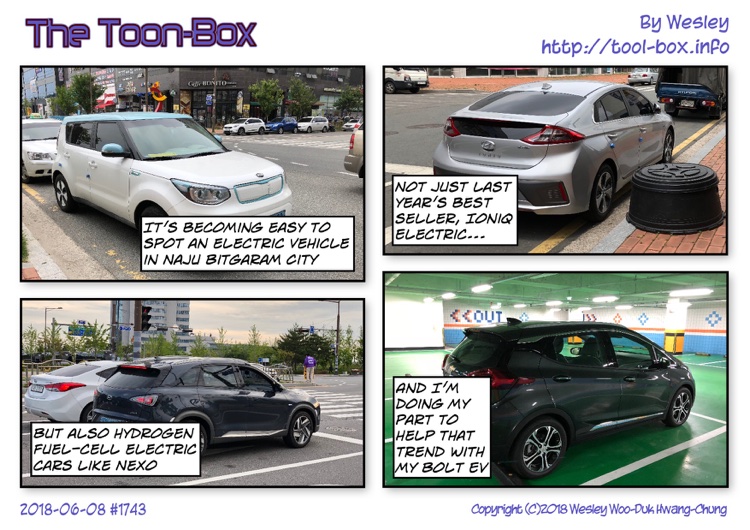Entries tagged as electric
National KP-55 Panasonic pencil sharpener Shapa Bitgaram City KEPCO KPX Naju travel construction road lake park BHC chicken blizzard snow Lotteria astronomy Canon SX50 HS ISS satellite New Year's Day snow angel fog Cajun Fries Mom's Touch Thigh Burger car Hayun Chung water Celine Chung contamination food truck Chappie Gwangju Gwangju Songjeong Station Megabox movie movie theatre smog Burger King restaurant farm garden coffee shop sidewalk Gochunaengi pork cutlet sushi animation Larva shopping cart expressway traffic jam commute 3D printing Makibox toy balloon car wash engine oil gas station lights Tamiya wheel headlights lamp repair Sonata 2 KIXX PAO smart meter smart plug solar panel building charger BIXPO Daepoong DE101 exposition battery drone ESS car inspection A1533 iPhone 5S A1524 belt case iPhone 6 Plus adapter cellphone JooN 2 power plug USB watch Europe Japan Korea O2E Smart Multi-Charger UK USA Apple Watch cable watchOS 2 Geekbench iPhone 3GS iPhone 4 iPhone 4S iPhone 5 iPhone 6S Plus Bluetooth GPS lightning Micro-USB pen shopping Bolt EV iPhone X Chevrolet relocation Seoul cabinet electricity EMS K-EMS New EMS Wesley Woo-Duk Hwang-Chung bus monument broiled eels eel Mac mini server book library Sung-Eun Kim convenience store KTX-Sancheon meal box wind turbine bed BEXCO Busan desk house laser pointer porcelains agriculture chocolate Associated Press Photo Exhibition Kimdaejung Convention Center camera coronavirus Daejeon museum National Science tester ball play set playground beverage Dubai milkshake COEX electric vehicle remote controlled helicopter replacement Syma S107G water resistance barcode Nintendo Wii Oband T2 remote control running screen swimming iOS PeaceKeeper Lego emergency news summer television winter Education Center Yu-Kyung Ha 123D Design Autodesk coin Bulacan Philippines school volunteering trash paint cake Christmas cafeteria Frozen Christmas tree decoration balls sled screwdriver table cookie milk Oreo Homeplus pizza chocolate chip cookies couch FaceTime rice cake Skype tteokguk computer swing Toys R Us trampoline Mega Kids Box tortilla wrap toothbrush salad Disney Danish butter cookies globe headphones pink breakfast rice porridge Lunar New Year traditional Korean dress Hyung-Bae Kim kite sausage Cloud Cuckoo Palace Princess Unikitty The Lego Movie Evil Robot slide double decker London strike subway Underground Tayo train airport BRT government complex Osong Station Sejong CGV boat Fukuoka Hakata hydrofoil seaport Dazaifu temple udon cathedral flower SRT Gangneung hockey Ioniq Nexo Soul EV FLIR One infrared thermal imaging sensor CarPlay iOS 12 LED air pump foot pump tire service area album BTS Map of the Soul Persona poster air conditioner cabin filter Maesong Sonata Gangnam Hyundai Parnas Samseong Seolleung Yongsan observatory parking lot haircut rock climbing supermarket arcade game bookstore Mexican pool telephone Vietnamese noodles cat hotel Moon Sanyo VPC-C4 Minolta Dimage X20 binoculars Chuseok telescope eclipse Kodak Z1085 IS star Sun slow motion A1530 LTE sound electric fan light trail M&M's OIS Cortex Camera Focus Pixels A1522 A1549 A1586 barometer iOS 8 iPad iPad mini iPhone 5C iPhone 6 KT LGU+ chopsticks Mini Stop coffee Saigon Latte capsule Shinto shrine Nexon Play tea Xiaoming Tongxue yoghurt Bacchus banana juice bread bulgogi onigiri rice bar ice cream instant noodles ramen ramyeon Seojun Electric corn dog hot-bed hot-end microwave spaghetti MERS kitchen oven cleaning office cooking pork ice icicle snowman tree shade fine dust truck cherry blossom Africa airplane Benin toll gate bicycle fingerprint Touch ID M7 pedometer accelerometer compass gyroscope M8 light fixture IoT SK Telecom smart button Elgato Eve HomeKit Koogeek Philips Hue power switch Apple TV 4th Gen Incipio Leviton Duty-Free mall station gift emart zoo No Brand soda soft drink LG Electronics refrigerator store towel pepperoni bank Hanaro Nonghyup Lotte apple hot dog New York Burger demonstration Wi-Fi sweet potato Olympic and Paralympic Games stadium tower Korea Institute of Energy Technology concert MITs-M4300 performance Swing Live Fest Series 2 watchOS 3 AT&T 3DMark Kraken Octane SunSpider Han-gang river passcode flare Iridium Alhena constellation Jupiter Orion baseball Oxford Block App Store PSAurora Celestron NexStar 6SE Tiangong planet Saturn cup holder smartphone mount iPad Pro 9.7 iPhone XS glass screen protector Daepoong piano ukulele baked bread carbonated water champon EXO jajangmyeon Shinee Super Junior cheese stick hamburger gummi bear Haribo jelly snack fish hamster parrot dog iMac iOS 14 iPhone 7 iPhone SE artificial star collimation Sony A5000 fluorescent light LG Prada 3.0 TopLux Sigma LED BuyBeam BL-628 assembly kit box Starbucks sanitizer ultraviolet department store Shinsegae beam projector Dongwon tuna fire Electron Street Chungjang-ro iPhone 6+ Gravity IMAX Interstellar Mockingjay popcorn The Hunger Games coaxial cable EyeTV McDonald's Prosperity Burger Japanese Macaque monkey pipe Uchi Zoo bear cougar hippopotamus tiger peacock goat raccoon
Today’s “The Toon-Box”
Posted by Wesley on
FLIR ONE Pro - Impressions & Outside Uses
Posted by Wesley on
I have been a long time user of a FLIR ONE, an infrared thermographic camera module that connects to a smartphone. This type of camera visualizes the hot and cold spots of a subject by measuring infrared emissions. Such cameras are generally quite expensive, but by reducing it to just the camera module and relegating much of the operation to the connected smartphone, having it at a much lower price point became possible. That's how the FLIR ONE series came about.
More specifically, I own a first generation of the series, which is shaped to fit on an iPhone 5 or 5S only. Subsequent generations were redesigned to support a wide range of phones. So I was quite thankful to have given the chance by FLIR to test out the high-end version of their latest generation smartphone attachment - the FLIR ONE Pro. I was eager to see what sorts of improvements were made during the past few years.
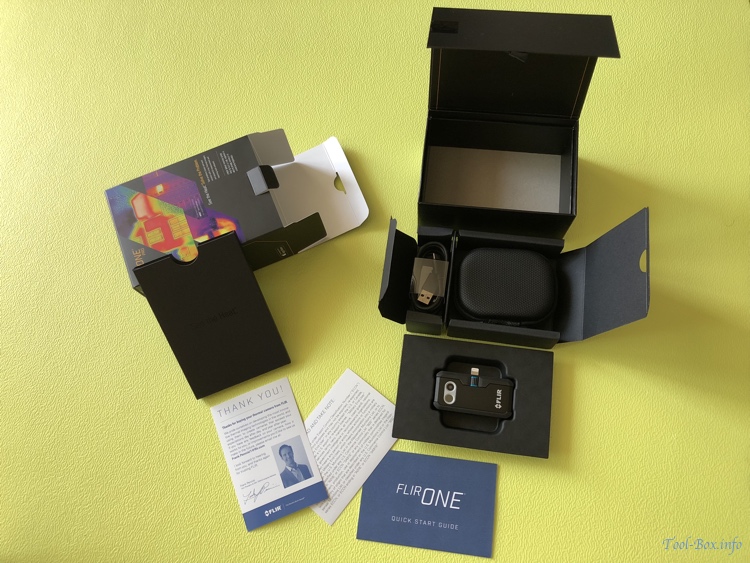
The product came in a colourful box that contained the main module, a USB-C charging cable, a compact carrying pouch, and some leaflets. The general style of the packaging had remained constant and professional, and the addition of a pouch was a nice touch since the module really shines when it can be brought to everywhere.
The quick start guide basically tells you to connect the module to your smartphone and install the FLIR ONE app. It is really a plug-and-go affair, so the simplicity is understandable. I do wonder if basic app functions could have been explained on paper a bit further, however.
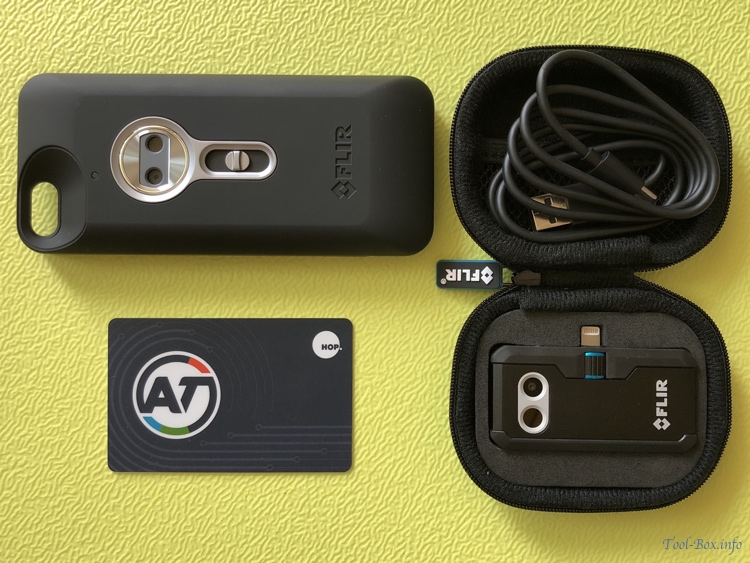
Comparing to the first generation module, the look of the main component - the thermographic sensor and the regular camera bundle - hasn't changed much. However, the overall packaging has changed dramatically. The first generation was shaped to encase an iPhone 5/5S, so the long shape allowed it to house a large battery. It also has a recalibration / power switch next to the sensor bundle.
The FLIR ONE Pro, on the other hand, was designed to fit on a data/charging port of a phone and is smaller than a transit card. In order to accommodate thick phone cases, the length of the connector on the module is adjustable through the dial just below it. In order to make it compact, however, the integrated battery is much smaller and runs shorter than the first generation. There is a small power button at the bottom with status light. Automatic recalibration function did away with a need for a manual button.
Continue reading "FLIR ONE Pro - Impressions & Outside Uses"
More specifically, I own a first generation of the series, which is shaped to fit on an iPhone 5 or 5S only. Subsequent generations were redesigned to support a wide range of phones. So I was quite thankful to have given the chance by FLIR to test out the high-end version of their latest generation smartphone attachment - the FLIR ONE Pro. I was eager to see what sorts of improvements were made during the past few years.

Contents of the FLIR ONE Pro package
The product came in a colourful box that contained the main module, a USB-C charging cable, a compact carrying pouch, and some leaflets. The general style of the packaging had remained constant and professional, and the addition of a pouch was a nice touch since the module really shines when it can be brought to everywhere.
The quick start guide basically tells you to connect the module to your smartphone and install the FLIR ONE app. It is really a plug-and-go affair, so the simplicity is understandable. I do wonder if basic app functions could have been explained on paper a bit further, however.

Size of FLIR One 1st generation (top left) and FLIR ONE Pro (bottom right) compared with a transit card (bottom left)
Comparing to the first generation module, the look of the main component - the thermographic sensor and the regular camera bundle - hasn't changed much. However, the overall packaging has changed dramatically. The first generation was shaped to encase an iPhone 5/5S, so the long shape allowed it to house a large battery. It also has a recalibration / power switch next to the sensor bundle.
The FLIR ONE Pro, on the other hand, was designed to fit on a data/charging port of a phone and is smaller than a transit card. In order to accommodate thick phone cases, the length of the connector on the module is adjustable through the dial just below it. In order to make it compact, however, the integrated battery is much smaller and runs shorter than the first generation. There is a small power button at the bottom with status light. Automatic recalibration function did away with a need for a manual button.
Today’s “The Toon-Box”
Posted by Wesley onI bought my first car and it’s an electric vehicle
Posted by Wesley on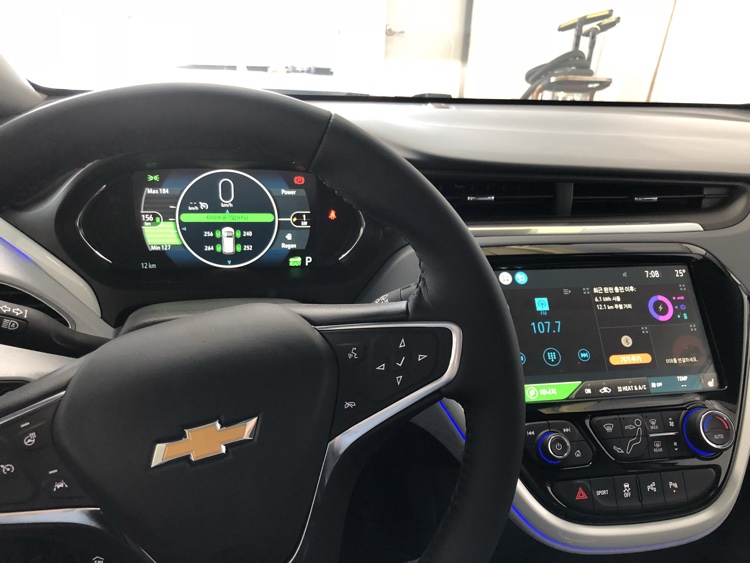
Looking at the dashboard of Bolt EV from the driver’s seat
Up until now, I’ve been driving the car my parents used to drive, and I had been putting off on buying my own until something that could satiate my fondness for technology would come along. And I finally found that car - Chevrolet Bolt EV, a fully battery powered electric vehicle. I pre-ordered this year’s version in January, and was expected to get it by late July, but I got lucky and I picked it up today. The car is very responsive, which I like.
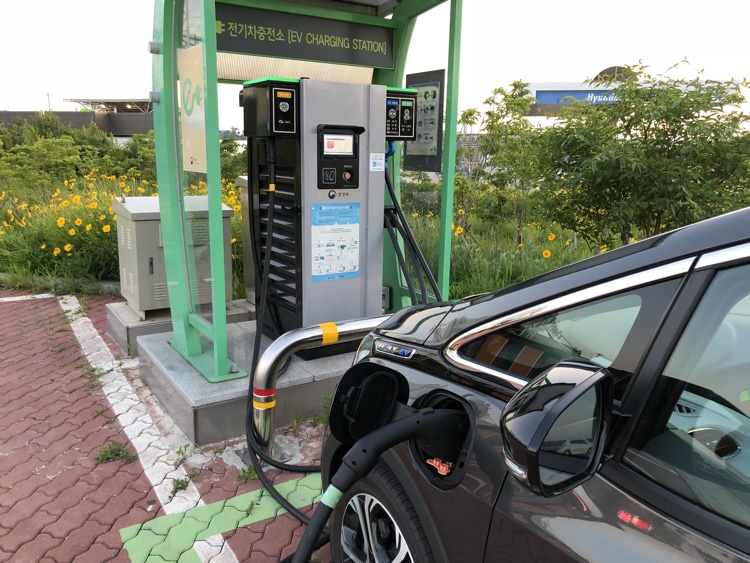
Charging the Bolt EV at a highway service area
The car wasn’t fully charged at the time of the handover - it only had enough charge for about 150km of driving. So I’m charging it at a service area as I write this after driving about 50km. I still have more than 300km to go, so hopefully it’ll get charged enough for me to return home.

